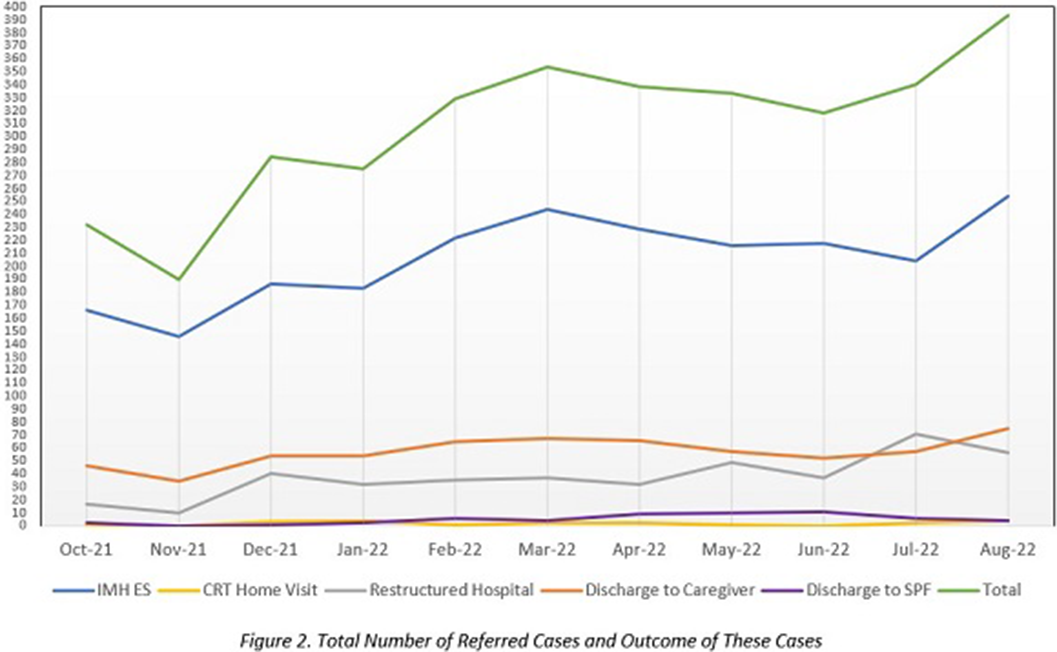138 results
The interprofessional collaboration between police and crisis response team in managing suicide-related cases in Singapore
-
- Journal:
- European Psychiatry / Volume 66 / Issue S1 / March 2023
- Published online by Cambridge University Press:
- 19 July 2023, pp. S500-S501
-
- Article
-
- You have access
- Open access
- Export citation
New ways of working: COVID-19 as a catalyst for change in acute mental health services
-
- Journal:
- European Psychiatry / Volume 66 / Issue S1 / March 2023
- Published online by Cambridge University Press:
- 19 July 2023, p. S310
-
- Article
-
- You have access
- Open access
- Export citation
A deep reinforcement learning-based approach to onboard trajectory generation for hypersonic vehicles
-
- Journal:
- The Aeronautical Journal / Volume 127 / Issue 1315 / September 2023
- Published online by Cambridge University Press:
- 08 February 2023, pp. 1638-1658
-
- Article
- Export citation
Acceleration of 60 MeV proton beams in the commissioning experiment of the SULF-10 PW laser
- Part of
-
- Journal:
- High Power Laser Science and Engineering / Volume 10 / 2022
- Published online by Cambridge University Press:
- 03 August 2022, e26
-
- Article
-
- You have access
- Open access
- HTML
- Export citation
The burgeoning role of speech and language assessment in schizophrenia spectrum disorders
-
- Journal:
- Psychological Medicine / Volume 53 / Issue 10 / July 2023
- Published online by Cambridge University Press:
- 18 May 2022, pp. 4825-4826
-
- Article
-
- You have access
- HTML
- Export citation
Forecasting the monthly incidence of scarlet fever in Chongqing, China using the SARIMA model
-
- Journal:
- Epidemiology & Infection / Volume 150 / 2022
- Published online by Cambridge University Press:
- 21 April 2022, e90
-
- Article
-
- You have access
- Open access
- HTML
- Export citation
Application of rigid bronchoscopy for emergent removal of tracheobronchial foreign body in paediatric cases: a learning curve study
-
- Journal:
- The Journal of Laryngology & Otology / Volume 136 / Issue 11 / November 2022
- Published online by Cambridge University Press:
- 16 December 2021, pp. 1130-1134
- Print publication:
- November 2022
-
- Article
-
- You have access
- Open access
- HTML
- Export citation
The radioactive nuclei
 $^{\textbf{26}}\mathrm{Al}$
and
$^{\textbf{26}}\mathrm{Al}$
and  $^{\textbf{60}}\mathrm{Fe}$
in the Cosmos and in the solar system
$^{\textbf{60}}\mathrm{Fe}$
in the Cosmos and in the solar system
-
- Journal:
- Publications of the Astronomical Society of Australia / Volume 38 / 2021
- Published online by Cambridge University Press:
- 09 December 2021, e062
-
- Article
-
- You have access
- Open access
- HTML
- Export citation
A distance sampling survey of the Critically Endangered Straw-headed Bulbul Pycnonotus zeylanicus in Singapore
-
- Journal:
- Bird Conservation International / Volume 31 / Issue 3 / September 2021
- Published online by Cambridge University Press:
- 16 November 2020, pp. 468-480
-
- Article
- Export citation
Mechanical properties of UN-5100 envelope material for stratospheric airship
-
- Journal:
- The Aeronautical Journal / Volume 125 / Issue 1285 / March 2021
- Published online by Cambridge University Press:
- 12 October 2020, pp. 472-488
-
- Article
- Export citation
Magnetic energy dissipation during the current quench of disruption in EAST
- Part of
-
- Journal:
- Journal of Plasma Physics / Volume 86 / Issue 5 / October 2020
- Published online by Cambridge University Press:
- 08 October 2020, 905860509
-
- Article
- Export citation
Genome-wide association study of bone mineral density trait among three pig breeds
-
- Article
-
- You have access
- HTML
- Export citation
1175 – The Effect Of Mk-801 On The Erk-creb Signal System In Prenatally Stressed Offspring Rats
-
- Journal:
- European Psychiatry / Volume 28 / Issue S1 / 2013
- Published online by Cambridge University Press:
- 15 April 2020, 28-E549
-
- Article
-
- You have access
- Export citation
P-543 - Effect of Prenatal Stress on Eaat2 and Eaat3 Mrna Expression in Hippocampus, Frontal Cortex and Striataum of rat Offspring
-
- Journal:
- European Psychiatry / Volume 27 / Issue S1 / 2012
- Published online by Cambridge University Press:
- 15 April 2020, p. 1
-
- Article
-
- You have access
- Export citation
411 – Prenatal Stress Induced Depression-Like Behavior and its Impacts on PGLUR1 Expression
-
- Journal:
- European Psychiatry / Volume 28 / Issue S1 / 2013
- Published online by Cambridge University Press:
- 15 April 2020, 28-E54
-
- Article
-
- You have access
- Export citation
Increased serum brain-derived neurotrophic factor levels following electroconvulsive therapy or antipsychotic treatment in patients with schizophrenia
-
- Journal:
- European Psychiatry / Volume 36 / August 2016
- Published online by Cambridge University Press:
- 23 March 2020, pp. 23-28
-
- Article
- Export citation
A MARKED COX MODEL FOR THE NUMBER OF IBNR CLAIMS: ESTIMATION AND APPLICATION
-
- Journal:
- ASTIN Bulletin: The Journal of the IAA / Volume 49 / Issue 3 / September 2019
- Published online by Cambridge University Press:
- 28 May 2019, pp. 709-739
- Print publication:
- September 2019
-
- Article
- Export citation
A viscous damping model for piston mode resonance
-
- Journal:
- Journal of Fluid Mechanics / Volume 871 / 25 July 2019
- Published online by Cambridge University Press:
- 24 May 2019, pp. 510-533
-
- Article
- Export citation
Optimisation and analysis of efficiency for contra-rotating propellers for high-altitude airships
-
- Journal:
- The Aeronautical Journal / Volume 123 / Issue 1263 / May 2019
- Published online by Cambridge University Press:
- 22 April 2019, pp. 706-726
-
- Article
- Export citation














